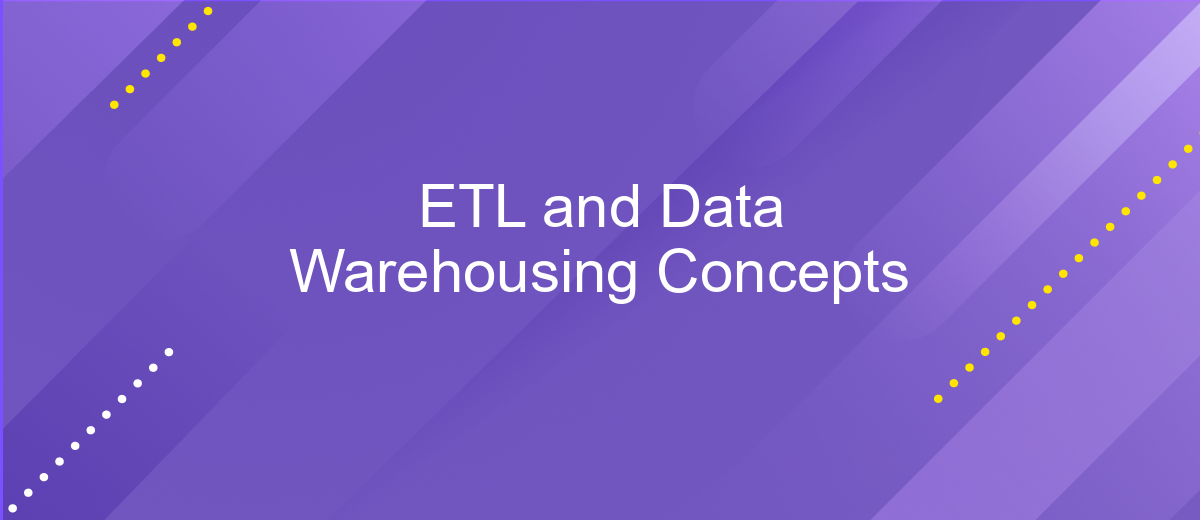ETL and Data Warehousing Concepts
ETL (Extract, Transform, Load) and data warehousing are fundamental concepts in the realm of data management and analytics. They involve the systematic extraction of data from various sources, its transformation into a suitable format, and loading it into a centralized data warehouse. This process enables organizations to efficiently store, manage, and analyze large volumes of data, driving informed decision-making and strategic insights.
Introduction to ETL and Data Warehousing
ETL (Extract, Transform, Load) and data warehousing are fundamental concepts in the field of data management and analytics. ETL involves extracting data from various sources, transforming it into a suitable format, and loading it into a data warehouse. This process ensures that data is clean, consistent, and ready for analysis.
- Extract: Data is gathered from multiple sources such as databases, APIs, and flat files.
- Transform: The extracted data is cleaned, normalized, and transformed to fit the target schema.
- Load: The transformed data is then loaded into a data warehouse for storage and analysis.
Data warehousing involves storing large volumes of data in a central repository, making it accessible for querying and reporting. This enables organizations to make data-driven decisions. Tools like ApiX-Drive can simplify the integration process by connecting various data sources and automating the ETL workflow, ensuring seamless data flow and reducing manual effort.
ETL Processes and Tools

ETL (Extract, Transform, Load) processes are essential for data warehousing and involve three primary steps. Extraction refers to retrieving data from various sources, such as databases, APIs, and flat files. This data is then transformed to fit the operational needs, which may involve cleaning, aggregating, and enriching the data. Finally, the transformed data is loaded into a data warehouse or another target database, where it can be accessed for analysis and reporting.
There are numerous tools available to facilitate ETL processes, ranging from open-source solutions like Apache Nifi and Talend to commercial options such as Informatica and Microsoft SSIS. Additionally, services like ApiX-Drive can simplify the integration process by providing a user-friendly interface for connecting different data sources and automating data workflows. These tools and services are crucial for ensuring that data is accurately and efficiently moved, transformed, and stored, enabling businesses to make data-driven decisions.
Data Warehouse Concepts and Design Considerations

Data warehouses are centralized repositories designed to store, manage, and analyze large volumes of data from multiple sources. They enable organizations to make informed decisions by providing a unified view of their data. When designing a data warehouse, several key considerations must be taken into account to ensure efficiency and scalability.
- Data Integration: Efficiently integrating data from various sources is crucial. Tools like ApiX-Drive can simplify this process by automating data transfer and ensuring seamless connectivity.
- Storage Architecture: Choosing the right storage architecture, such as star schema or snowflake schema, is essential for optimizing query performance and data retrieval.
- Data Quality: Ensuring high data quality through validation and cleansing processes is vital for accurate analysis and reporting.
- Scalability: The data warehouse must be designed to scale with the growing data volume and user demands.
- Security: Implementing robust security measures to protect sensitive data is critical for compliance and data integrity.
By considering these factors, organizations can design a data warehouse that not only meets their current needs but also adapts to future requirements. A well-designed data warehouse enables efficient data management, leading to better decision-making and strategic insights.
Data Management and Integration Best Practices

Effective data management and integration are critical for the success of any ETL and data warehousing project. Ensuring data quality, consistency, and accessibility require a set of best practices that can streamline processes and improve outcomes. The goal is to create a robust data ecosystem that supports business intelligence and decision-making.
One of the key practices in data management is establishing a strong data governance framework. This includes defining data ownership, setting data quality standards, and implementing data lineage tracking. Additionally, leveraging automation tools like ApiX-Drive can significantly enhance your integration processes by simplifying the connection between various data sources and applications.
- Implement data validation checks to ensure data accuracy.
- Use ETL tools to automate data extraction, transformation, and loading.
- Regularly monitor and audit data processes to maintain data integrity.
- Utilize cloud-based solutions for scalable and flexible data storage.
By following these best practices, organizations can achieve a more reliable and efficient data management system. Tools like ApiX-Drive can play a pivotal role in facilitating seamless data integration, allowing businesses to focus on deriving insights and making data-driven decisions. Prioritizing these practices will ultimately lead to improved data quality and operational efficiency.
- Automate the work of an online store or landing
- Empower through integration
- Don't spend money on programmers and integrators
- Save time by automating routine tasks
Case Studies and Applications of ETL and Data Warehousing
One of the prominent case studies illustrating the power of ETL and data warehousing is seen in retail. A leading global retailer employed ETL processes to integrate data from various sources, including online transactions, in-store sales, and customer loyalty programs. By consolidating this data into a centralized warehouse, the retailer gained real-time insights into inventory levels, customer preferences, and sales trends. This enabled them to optimize stock levels, personalize marketing campaigns, and ultimately increase revenue.
In the realm of digital marketing, companies often utilize services like ApiX-Drive to streamline data integration. For instance, a marketing agency used ApiX-Drive to automate the extraction of campaign performance data from multiple platforms such as Google Ads, Facebook, and Instagram. By transforming and loading this data into a unified warehouse, they could perform comprehensive analytics to evaluate the effectiveness of their campaigns. This not only saved time but also provided actionable insights, allowing for more informed decision-making and improved campaign outcomes.
FAQ
What is ETL?
Why is ETL important in data warehousing?
What are the common challenges faced during the ETL process?
How can automation tools help in ETL and data warehousing?
What is the difference between ETL and ELT?
Strive to take your business to the next level, achieve your goals faster and more efficiently? Apix-Drive is your reliable assistant for these tasks. An online service and application connector will help you automate key business processes and get rid of the routine. You and your employees will free up time for important core tasks. Try Apix-Drive features for free to see the effectiveness of the online connector for yourself.


